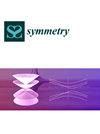An Enhanced Ant Colony System Algorithm Based on Subpaths for Solving the Capacitated Vehicle Routing Problem
IF 2.2
3区 综合性期刊
Q2 MULTIDISCIPLINARY SCIENCES
引用次数: 0
Abstract
The capacitated vehicle routing problem (CVRP) is regarded as an NP-hard problem. Moreover, the CVRP is described as a model that can be used in many applications such as transport, logistics, and distribution. The exact algorithms can find exact optimal solutions on the small-sized problem instances; however, for large-sized instances it is difficult to find the exact optimal solutions in polynomial time. This reason motivated the researchers to present heuristic/metaheuristic algorithms to solve large-sized problem instances within a reasonable computational time. One of the good algorithms that deal with the CVRP is the ant colony optimization (ACO) algorithm. Several ACO algorithms have been suggested in the literature, such as the ant system (AS) algorithm, ant colony system (ACS) algorithm, and so on. On the other hand, ACO is designed to solve the path problem that finds the best way. However, this algorithm still lacks exploratory mechanisms, which results in premature convergence and stagnation issues. Therefore, we propose to develop an enhanced ACS (EACS) algorithm for solving the CVRP based on subpaths. In our proposed algorithm, we propose to utilize the K-nearest neighbour (KNN) algorithm for finding the best initial solution and then enhance the diversity mechanism of the proposed algorithm by avoiding the generation of the same solution using subpaths. This uses the diversity of the generated solution to find a better solution with a shorter route in a reasonable amount of computational time. Furthermore, we propose to apply the three-opt algorithm to the completed subtour and the k-opt algorithm to the subpath gained from the experience of the subpath. Finally, to verify the effectiveness of the proposed EACS algorithm, the algorithm is tested on some CVRP instances and is compared with one of the state-of-the-art methods, namely, the enhanced simulated annealing algorithm. The comparative study showed a better performance of our EACS compared to the enhanced simulated annealing algorithm.基于子路径的增强蚁群算法求解有能力车辆路径问题
有能力车辆路径问题(CVRP)是一个NP-hard问题。此外,CVRP被描述为一种可用于运输、物流和分销等许多应用程序的模型。精确算法能在小问题实例上找到精确的最优解;然而,对于大规模的实例,很难在多项式时间内找到精确的最优解。这一原因促使研究者提出启发式/元启发式算法来在合理的计算时间内解决大规模的问题实例。处理CVRP的一个很好的算法是蚁群优化(ACO)算法。文献中提出了几种蚁群算法,如蚂蚁系统(as)算法、蚁群系统(ACS)算法等。另一方面,蚁群算法旨在解决寻找最佳路径的路径问题。然而,该算法仍然缺乏探索性机制,导致过早收敛和停滞问题。因此,我们建议开发一种基于子路径的增强型ACS (EACS)算法来求解CVRP。在我们提出的算法中,我们提出利用k近邻(KNN)算法来寻找最佳初始解,然后通过避免使用子路径生成相同的解来增强所提出算法的多样性机制。它利用生成的解决方案的多样性,在合理的计算时间内用更短的路线找到更好的解决方案。此外,我们提出将three-opt算法应用于已完成的子路径,将k-opt算法应用于从子路径经验中获得的子路径。最后,为了验证所提出的EACS算法的有效性,在一些CVRP实例上对该算法进行了测试,并与最先进的方法之一,即增强型模拟退火算法进行了比较。对比研究表明,与增强的模拟退火算法相比,我们的EACS具有更好的性能。
本文章由计算机程序翻译,如有差异,请以英文原文为准。
求助全文
约1分钟内获得全文
求助全文
来源期刊

Symmetry-Basel
MULTIDISCIPLINARY SCIENCES-
CiteScore
5.40
自引率
11.10%
发文量
2276
审稿时长
14.88 days
期刊介绍:
Symmetry (ISSN 2073-8994), an international and interdisciplinary scientific journal, publishes reviews, regular research papers and short notes. Our aim is to encourage scientists to publish their experimental and theoretical research in as much detail as possible. There is no restriction on the length of the papers. Full experimental and/or methodical details must be provided, so that results can be reproduced.
 求助内容:
求助内容: 应助结果提醒方式:
应助结果提醒方式:


